Amano: Around the world ticket
A new development strategy is making parking standardised, harmonised and more efficient for all users – in any country it is deployed in
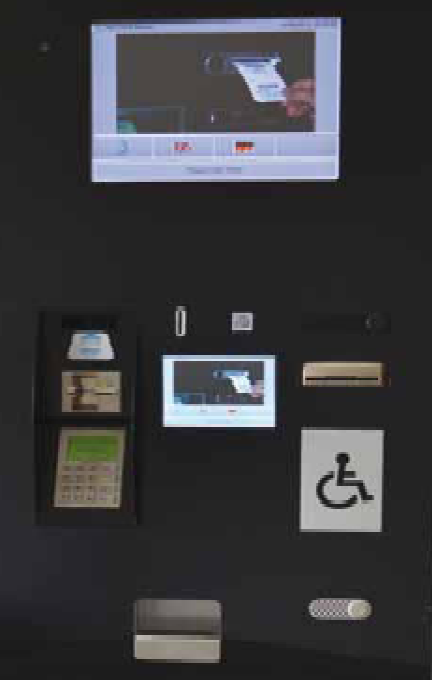
In any sector, the development of new functionality, options, machines and software is an expensive matter. In that respect it is imperative that every new request is subjected to an in-depth analysis and an approval process. This is particularly true of the parking sector, where in today’s climate, every penny not only counts but has to be thoroughly accounted for.
Besides criteria such as quality improvement, compliancy (to local laws) and project-specific requirements, a concept called ‘glocalisation’ has also been adopted by Amano as a standard approach to develop its products in the most efficient way possible.
If a company’s customer base spreads over many countries it is obvious that a vast amount of local requirements will need approval and prioritisation by product management and the development team. The glocalise principle requires that a machine or software option is envisioned such that its applicability exceeds the needs of the original request and becomes customer – or even country – independent. At the same time, any new features should be analysed so that the commercial benefits are fully maximised.
The Equality Act 2010 law, which has finally been imposed on the UK market from 2012, is a typical example of local compliancy. As with other European countries, the UK has enforced upon all aspects of society a set of rules to ensure that disabled people can lead a public life with the same level of comfort as people without a disability. Naturally, this applies to the parking business. 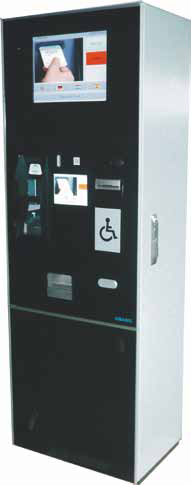
Two aspects of the Equality Act have an impact on parking: being wheelchair friendly and allowing for people with a hearing aid to use an intercom facility in a comfortable way. It is clear that both supplier and parking operator have the obligation and responsibility to comply with those regulations. The downsides are the cost and the potential annoyance for the non-disabled.
A pay on foot parking system can be made compliant with the Equality Act and as such, have all man-machine interfaces optimised for the wheelchair user. Yet the other 95% (or more) of the paying customers that do not ‘pay on wheels’ but pay on foot might be annoyed by having to bend over while paying. The new Disability Discrimination Act-compliant pay on foot system from Amano copes with that by offering a dual-display solution.
The hardware was designed so that the purpose of each display can be decided upon separately. The standard version will show the payment guidance screens on both displays. This results in a pay on foot machine that is easy to use by both people standing upright and those in wheelchairs.
In many countries one sees standard machines and DDA-compliant machines side by side to offer the same level of comfort to all paying customers. With the new pay on foot device a number of possibilities arise.
If DDA is not a legal requirement, the machine can also be offered without the small display. This reduces the price and results in a standard machine.
In addition to that, the car park management can decide whether to give the big display another purpose. The small display can be used as a payment guidance screen, remaining wheelchair friendly, whereas the big display provides service information. An example can be the promotion of monthly subscriptions.
In principle, static information that can be customised to the operator’s needs can be displayed. Ideally, alternating screens are shown that mix this type of information with advertisements. This approach means that additional recurring revenue is possible.
Information screens for end users
Knowing that every machine in the Xparc system is communicating by TCP/IP, it is obvious that web pages can be shown that offer the necessary information to end users (addresses, QR-codes to transfer shop details or other information to a smartphone, etc.).
One of the benefits of a TCP/IP based hardware concept with a 100% web-based management environment is that additional interfaces to third party solutions can be integrated easily. This takes the term ‘service’ one step further.
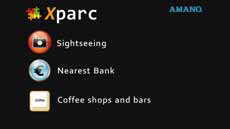
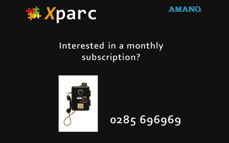
(Top) Information screen
(Bottom) Monthly subscription offer
The Xparc server offers several interface methods, from the very basic .CSV interface, database table synchronization to the more high-end and online web services. An XML/SOAP-based web service is available that can be integrated by numerous third party integrators. Any third-party application will always interface with the Xparc host, not with a parking machine. In that respect the amount of machines that will use the service is irrelevant.
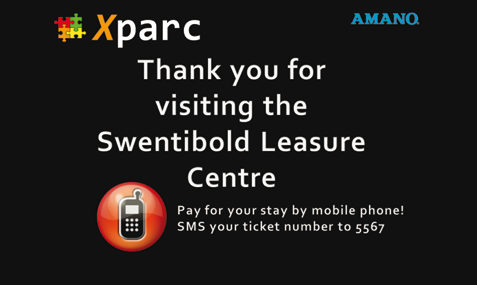
Screen showing customers that mobile payment is available
One solution offered by this approach is the possibility to pay for a parking ticket by mobile phone. To indicate to end users that this solution is available, the upper screen of the pay on foot can be used as a static information screen. Customers will pay for their ticket through their monthly mobile phone subscription.
Summary
In summary, Amano Europe offers a variety of web-based parking solutions. The open and 100% web-based architecture of Xparc allows Amano to cope with the growing complexity of parking management. Providing easy interfaces with third-party solutions is an inherent part of Amano’s vision on doing parking business today. As much as possible, new requirements are globally applicable.
Words: Roger Hulsbosch, Amano, Belgium






Comments
There are no comments yet for this item
Join the discussion